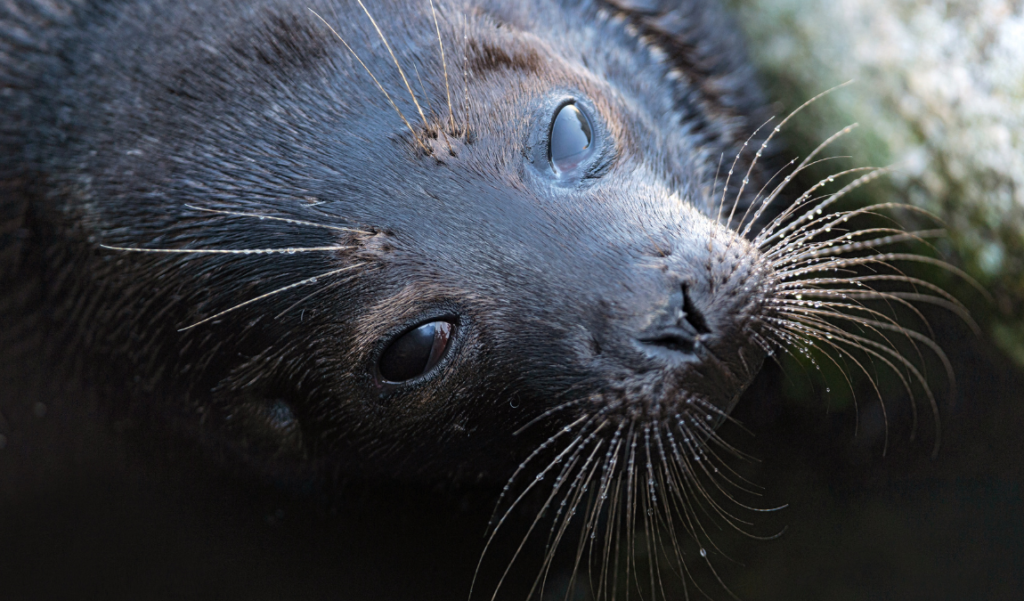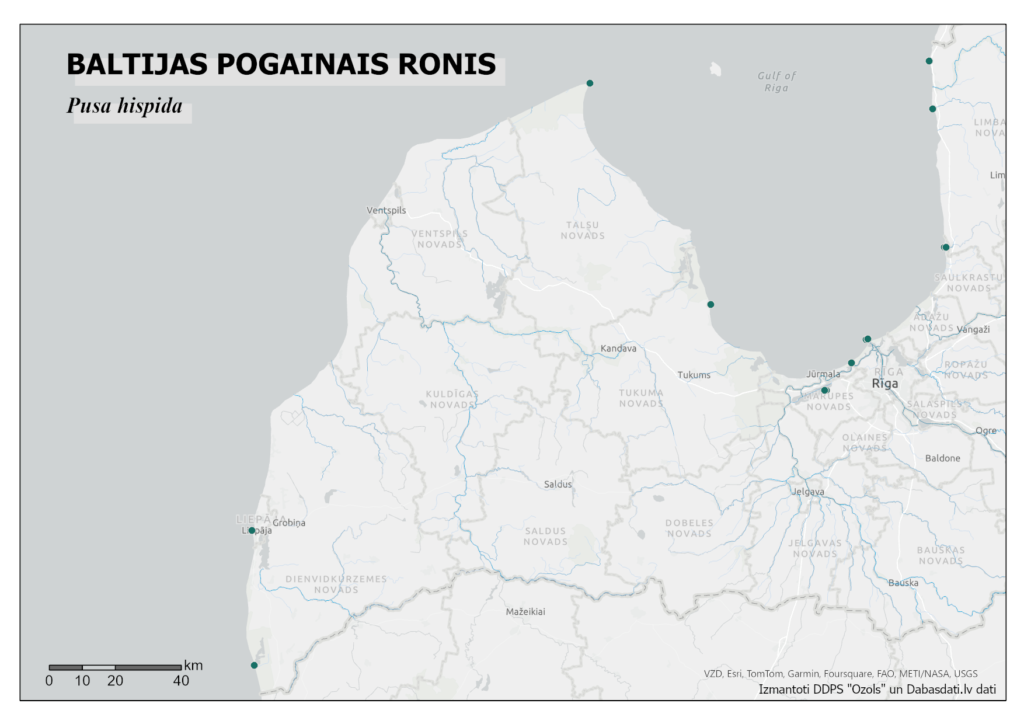Protected species of the month: Ringed Seal
As we enjoy the spring sunshine on the coast, so do seal pups. Although grey seal pups are the most commonly seen on Latvian beaches, this time we are highlighting a rarer species – the ringed seal (Pusa hispida).

The ringed seal, measuring 130-175 cm in length and weighing only 50-60 kg, is the smallest seal in the world. This species typically lives for 25-30 years, but some individuals have been recorded to surpass 40 years. The seal’s rough, greyish fur (lighter on the belly) features irregularly shaped (mostly oval) spots surrounded by light rings, with a generally unspotted mid-back. It is distinguished from other seals by its small size, blunt snout, “cat-like” facial profile, and unique body coloring. Viewed from the front, its nostrils form a V-shape.
Diet and Habitat
The ringed seal mainly feeds on small fish, it also eats benthic fish and crustaceans. Seals spend most of their lives in the water, feeding. They give birth and rear their pups on ice, where they also rest.
In the Baltic Sea, ringed seals use rocks and cliffs in coastal waters for resting. During the ice-free period, they live pelagically and individually, occasionally resting on stones. They rarely come ashore.
Reproduction
Ringed seals are polygamous: during the mating season in April and May, each male has a territory of several square kilometers, which it defends from other males and overlaps with the territories of several females. Females reach sexual maturity at 3-6 years old and usually give birth to one pup each year. Pups are born in February or early March on ice. The nursing period lasts 6-8 weeks, with the mother being the sole caretaker. Mating occurs while females are still nursing. The gestation period lasts 10.5-11 months.
Threats
In the early 20th century, the ringed seal was the most common seal species in the Baltic Sea, but excessive hunting caused a sharp population decline. Today, the greatest threats are global warming, which reduces sea ice, pollution from plastics, organochlorine compounds, and heavy metals, fishing activities, and other human impacts on the sea. In Latvia, the species is classified as critically endangered (EN).
Conservation
The ringed seal is a protected species in Latvia and the European Union. In 2021, a protection plan for seal species in Latvian waters was developed, with one goal being to resolve conflicts between seals and fishermen. It is crucial not to disturb seals when they are near the shore.
Distribution

The ringed seal is primarily found in the Arctic. The southern boundary of its range in the Baltic Sea is the Gulf of Riga. In Latvian waters, it feeds, while its resting places are in Moonsund, Estonia. It mainly inhabits the open part of the Gulf of Riga, less frequently coastal waters, the lower reaches of large rivers, and coastal lakes connected to the sea.
Interesting Fact
Isolated post-glacial relict populations of the ringed seal have remained in the Baltic Sea, Ladoga, and Saimaa lakes, forming distinct subspecies (in the Baltic Sea – Pusa hispida botnica).
If you ever spot a ringed seal in the wild, report your observation to the Nature Conservation Agency or the Dabasdati.lv portal. We would also be happy to receive reports and photos of sightings on our Facebook page.
